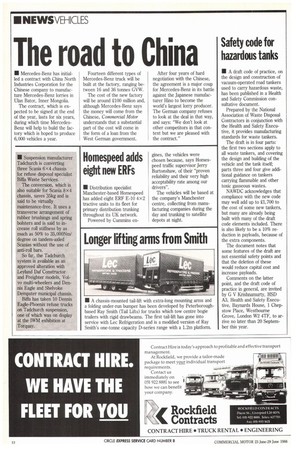Safety code for hazardous tanks
Page 14

If you've noticed an error in this article please click here to report it so we can fix it.
• A draft code of practice, on the design and construction of vacuum-operated road tankers used to carry hazardous waste, has been published in a Health and Safety Commission consultative document.
Prepared by the National Association of Waste Disposal Contractors in conjunction with the Health and Safety Executive, it provides manufacturing standards for waste tankers.
The draft is in four parts: the first two sections apply to all waste tankers, and covering the design and building of the vehicle and the tank itself; parts three and four give additional guidance on tankers carrying flammable and other toxic gasseous wastes.
NAWDC acknowledges that compliance with the new code may well add up to 21,700 to the cost of some new tankers, but many are already being built with many of the draft code elements included. There is also likely to be a 10% reduction in payloads, because of the extra components.
The document notes that some features of the draft are not essential safety points and that the deletion of these would reduce capital cost and increase payloads.
Comments on the latter point, and the draft code of practice in general, are invited by G V ICrishnamurty, HSD A3, Health and Safety Executive, Baynards House, 1 Chepstow Place, Westboume Grove, London W2 4TF, to arrive no later than 20 September this year.
















































































































































